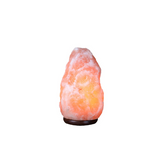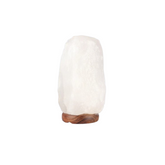Do Himalayan Salt Lamps Really Purify Air? Science Explained
Do Himalayan Salt Lamps Really Purify Air? Science Explained
Himalayan salt lamps are often marketed as natural air purifiers. The claim is alluring: a glowing chunk of ancient salt not only beautifies your space but also removes pollutants, emits negative ions, and enhances air quality. But how much of this is grounded in science and how much is clever marketing?
In this myth-busting guide, we’ll dig into the science (and pseudoscience) behind air purification, clarify the truth about negative ions, and explore why these lamps might still be worth keeping around just not for the reasons you may think.
Do Salt Lamps Really Purify Air?
Let’s tackle the central question directly.
There is no scientific evidence that Himalayan salt lamps purify air in any significant or measurable way.
These claims largely stem from the idea that salt has hygroscopic properties, meaning it can attract and absorb water molecules (and supposedly airborne pollutants) from the air. But here’s the catch:
- While salt can attract moisture in high-humidity environments, the amount is minuscule in typical room conditions.
- Even if pollutants were attracted, there’s no evidence they are retained or neutralized in any health-beneficial way.
- There are no peer-reviewed studies confirming measurable air quality improvements from these lamps.
Scientific Insight: According to the Environmental Protection Agency (EPA), effective air purifiers use HEPA filters or activated carbon, not passive materials like rock salt.
The Negative Ion Controversy
One of the most widely circulated claims is that salt lamps release negative ions, which supposedly:
- Bind to positively charged particles like dust, allergens, and smoke
- Cause them to fall to the ground
- Improve mood, sleep, and respiratory health
Let’s examine this through a scientific lens.
Do Salt Lamps Actually Produce Negative Ions?
Negative ions are naturally produced by waterfalls, thunderstorms, and ocean waves conditions involving high-energy water movement. Some electric ionizers are engineered to produce them artificially.
But salt lamps do not create negative ions in meaningful amounts.
-
The heat from the small bulb (15–25W) inside a salt lamp is not sufficient to ionize air particles.
-
Studies that do detect ion emissions in salt lamps find them to be extremely low, inconclusive, or negligible compared to real ionizers.
Expert Insight: According to the Journal of Negative Results in Biomedicine, there is no reproducible evidence supporting health claims associated with negative ions.
Common Myths About Salt Lamp Air Purification
Let’s break down some persistent myths around salt lamps:
| Myth | Reality |
|---|---|
| Salt lamps absorb toxins | They attract moisture, not toxins |
| They kill airborne bacteria | No scientific evidence supports this |
| Salt changes air composition | It does not alter or clean air molecules |
| Lamps can replace HEPA filters | They are not a substitute for certified air filtration systems |
| Negative ions enhance air quality | Only in high enough concentrations—salt lamps don’t produce these |
What Salt Lamps Can Do (Backed by Experience)
So if Himalayan salt lamps aren’t air purifiers, why are they still popular?
While the air purification myth is exaggerated, salt lamps do provide other meaningful benefits:
1. Ambience & Stress Reduction
- Their warm amber glow creates a soothing visual environment.
- Low-lux lighting helps signal the brain to wind down in the evening.
- They may support melatonin production due to reduced exposure to blue light.
2. Placebo Effect & Psychological Boost
- Believing a product is beneficial can enhance mood and reduce stress a documented placebo phenomenon.
- If users feel more at ease or sleep better, those effects are still psychologically real.
What the Science Says About True Air Purifiers
To truly improve air quality in your home or workspace, consider these proven methods:
- HEPA filters – Capture 99.97% of particles ≥0.3 microns
- Activated carbon filters – Remove odors and chemical vapors
- UV-C filters – Neutralize airborne pathogens
- Ventilation and humidity control – Reduce indoor pollutant buildup
Want to know the real health benefits of Himalayan salt lamps (outside of air purification)?
Conclusion: Beautiful, Yes. Air Cleaner? Not Quite.
Himalayan salt lamps do not purify air in the scientific sense. They don’t release enough negative ions, nor do they actively remove toxins or allergens. However, they do contribute positively to ambience, relaxation, and aesthetic wellness all of which can influence mental health.
If you're looking for an actual air cleaner, go for a certified air purifier. But if you're seeking a warm, calming glow and a dash of natural beauty, a salt lamp earns its place.





